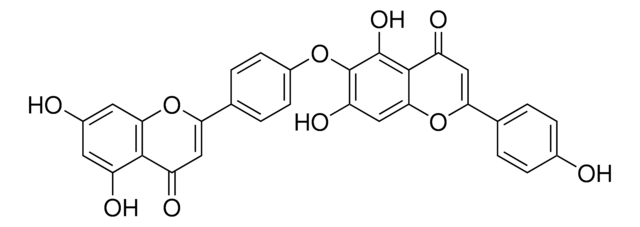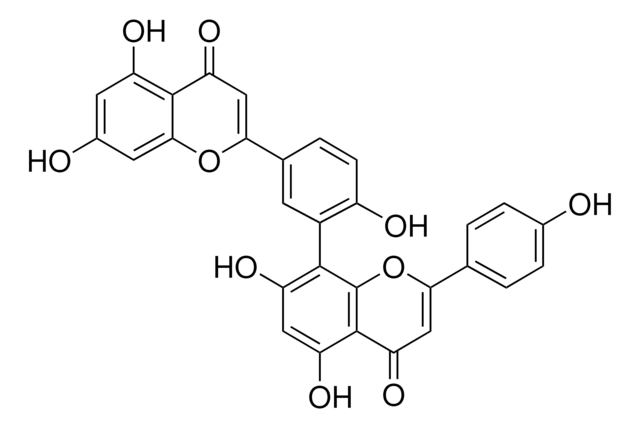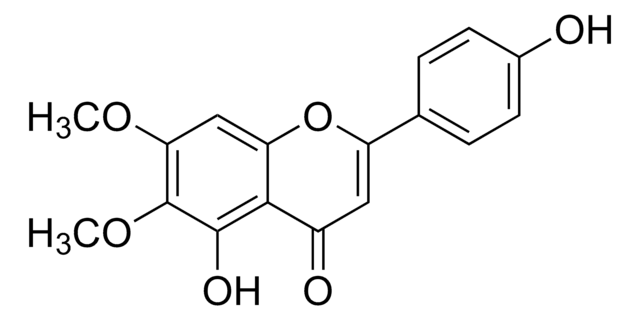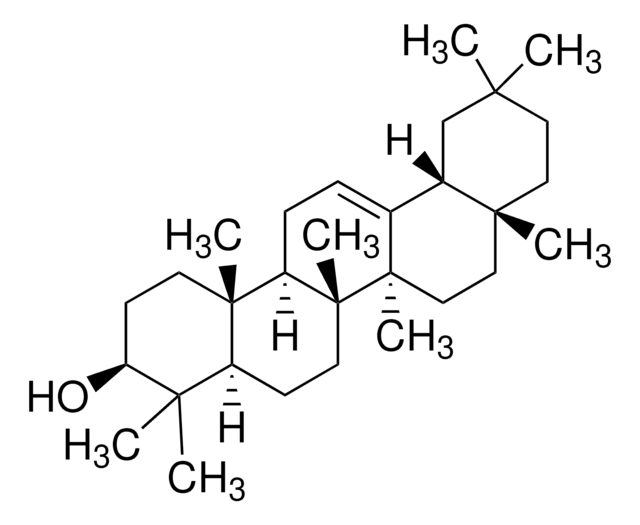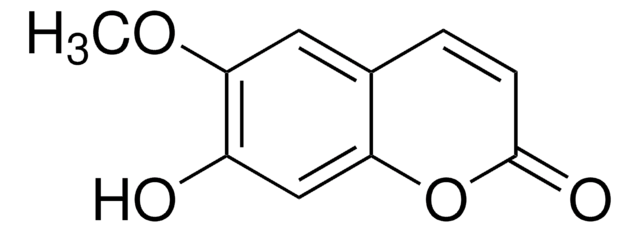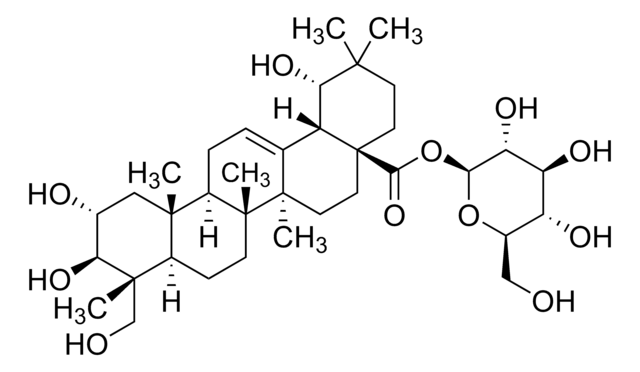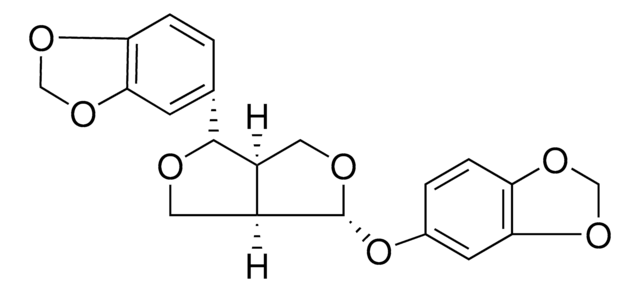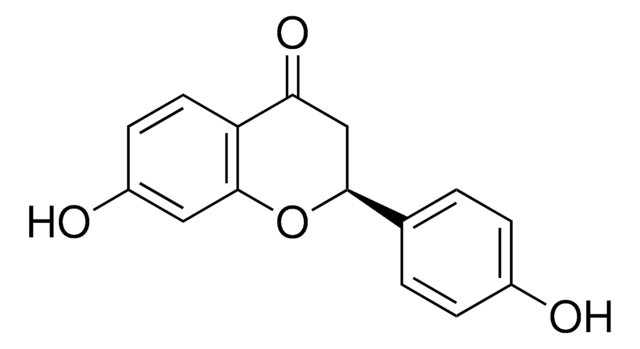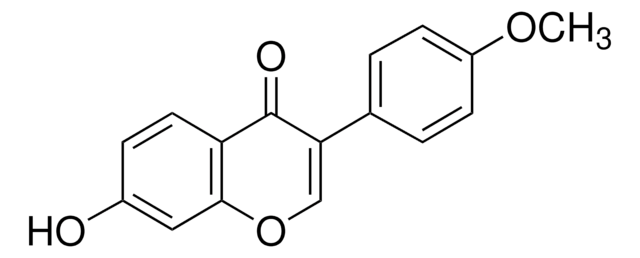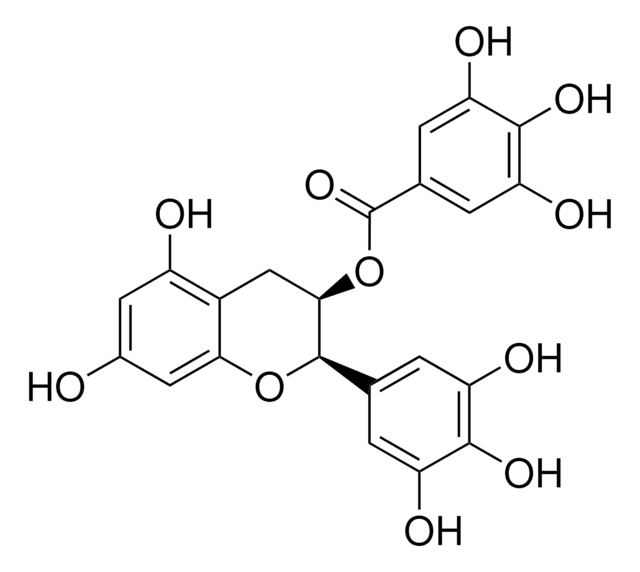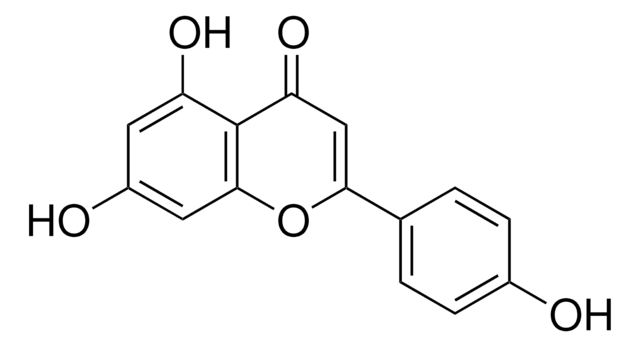SML0582
Hispidulin
≥98% (HPLC)
Synonym(s):
4′,5,7-Trihydroxy-6-methoxyflavone, 5,7-Dihydroxy-2-(4-hydroxyphenyl)-6-methoxy-4H-1-benzopyran-4-one, 6-Methoxyapigenin, 6-Methylscutellarein, Dinatin, Salvitin, Scutellarein 6-methyl ether
About This Item
Recommended Products
Quality Level
Assay
≥98% (HPLC)
form
powder
storage condition
desiccated
color
white to beige
solubility
DMSO: 20 mg/mL, clear
storage temp.
−20°C
SMILES string
OC1=C(OC)C(O)=C(C(C=C(C2=CC=C(O)C=C2)O3)=O)C3=C1
InChI
1S/C16H12O6/c1-21-16-11(19)7-13-14(15(16)20)10(18)6-12(22-13)8-2-4-9(17)5-3-8/h2-7,17,19-20H,1H3
InChI key
IHFBPDAQLQOCBX-UHFFFAOYSA-N
Looking for similar products? Visit Product Comparison Guide
Application
- in high-performance liquid chromatography (HPLC) for quantification of Clerodendrum petasites flavonoids
- in liquid chromatography/electrospray ionization mass spectrometry (LC/ESI-MS) analysis
- in reverse-phase high-performance liquid chromatography with a diode-array detector (HPLC-DAD) and high-performance thin-layer chromatography (HPTLC)
Biochem/physiol Actions
Features and Benefits
Storage Class Code
11 - Combustible Solids
WGK
WGK 3
Flash Point(F)
Not applicable
Flash Point(C)
Not applicable
Certificates of Analysis (COA)
Search for Certificates of Analysis (COA) by entering the products Lot/Batch Number. Lot and Batch Numbers can be found on a product’s label following the words ‘Lot’ or ‘Batch’.
Already Own This Product?
Find documentation for the products that you have recently purchased in the Document Library.
Customers Also Viewed
Our team of scientists has experience in all areas of research including Life Science, Material Science, Chemical Synthesis, Chromatography, Analytical and many others.
Contact Technical Service